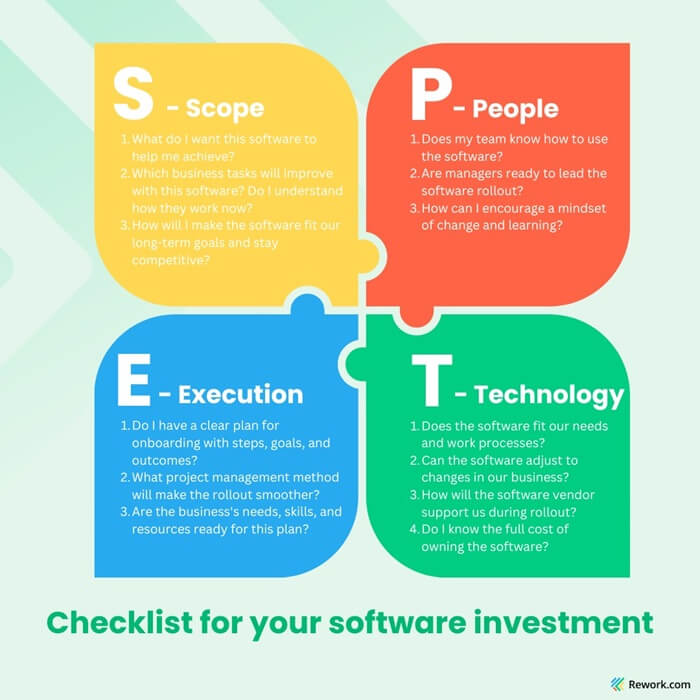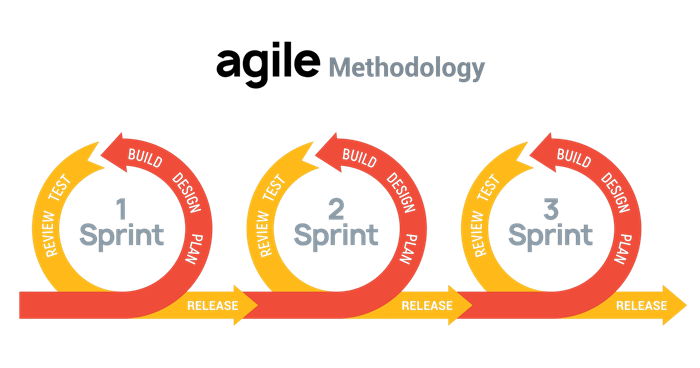Leadership
We deployed our software for 9000+ customers and came up with this "success" framework

As a CEO, business efficiency is always at the top of your list. You know that a smooth operation means better profits, happier customers, and a less stressed team.
With that in mind, software solutions that promise to streamline operations, boost productivity, and drive growth must sound tempting. Imagine a well-organized workflow, less time on mundane tasks, and more focus on what really matters. Isn’t that what you always dream about?
Yet, each time you consider investing in software, a nagging fear holds you back.
What if the software fails to solve your problems?
What if your team struggles with it and it slows everyone down instead?
What if the costs keep adding up with hidden fees and extra charges?
...
We encountered a similar story recently. One of our sales reps had a meeting with a CEO who is running a small but ambitious company. She subscribed to a legal accounting software, convinced it would transform how they work.
However, six months down the line, the software was barely used. It was so complicated that no one in the company knew how to operate it properly.
No need to describe how frustrated she felt. What was supposed to be a game-changer turned into such a disappointment, leaving her questioning every tech decision. This time, she approached us cautiously for fear of “burning money” again, to quote her words.
Stop wasting money on your software purchase: The SPET Formula
It’s understandable why this CEO, and perhaps you too, feel so hesitant. Investing in a new software is a tough decision, and the fear of it not living up to expectations is all too common and 100% valid.
According to research findings published in PRNewswire by Zylo, companies wasted an average of $18 million on unused SaaS licenses in 2023, using only about half of what they purchased.
This issue, known as “software wastage”, is even more alarming in Southeast Asia due to lower digital awareness.
**You can check if you are also experiencing software wastage by conducting this Software Waste Assessment Checklist. **
If you smell the risk of some money loss, it may not be too late to fix it. In this article, let’s explore this success framework for software implementation in your organization. And we know there’s no room for theory or complicated model - it’s a battle-tested formula derived from our experience with 9000+ clients.
We have to put this disclaimer upfront: Even with this formula in hand, we cannot guarantee 100% that our software will not go to waste. The reason is simple: success does not come solely from our attempts. This may sound counterintuitive, but software implementation, especially the kind of software that integrates deeply with your daily operations, is, in the end, a matter of change management, and it surely requires more than just technical expertise.
The framework we want to introduce to you, which we call shortly The “SPET” formula, requires the interconnection of four factors:
S - “Scope” involves identifying the goal and the use case of the software in relation to the business context.
P - “People” focuses on having the necessary competencies and attitudes to implement and use the software effectively.
E- “Execution” ensures a smooth deployment process, involving coordination between in-house teams and the software provider.
T - “Technology” involves selecting the software that best meets the business needs.
As essential as they are, these SPE factors are often overlooked. Here’s how to improve them for a profitable software investment.

Executive Summary: Key Questions CEOs Should Ask When Implementing New Software
**Scope: Aligning Software with Business Context **
- What specific goals do I want to achieve with this software?
- Which business processes will benefit most from this software? Do I know how those processes are going?
- How will I optimize the software to meet our long-term business strategy and competitive edge?
People: Building the Right Competencies
- Do my team members have the necessary technical skills to operate the software effectively?
- Are key stakeholders and middle managers equipped to lead the software implementation?
- How can I foster a culture that embraces change and continuous learning?
Execution: Ensuring Smooth Deployment
- Have I developed a robust onboarding plan with clear stages, objectives, and deliverables?
- What project management methodology can I apply to streamline the implementation process?
- Are the business's immediate needs, competency levels, and resource availability aligned with the implementation plan?
Technology: Selecting the Right Software
- Does the software meet our specific business needs and processes?
- Is the software flexible enough to adapt to our changing business requirements?
- How is the software vendor going to support my implementation process?
- Am I aware of the total cost of ownership of the software?
1. Scope: It’s all about Alignment
In our opinion, this is the most important factor of the four.
A well-defined Scope ensures that the software is not just a standalone tool but a key part of the business, building on its competitive edge and efficiency.
It’s common to see organizations rushing into purchasing software based on trends or vendor promises without figuring out their own requirements. However, they often end up failing to realize any particular benefits of the software, and their employees are more likely to resist changes.
Therefore, it’s essential to focus on what you want to achieve with the software. No need to make a huge deal like a whole strategy, you can just start with something simple like: “Within two months, digitize five key processes and gather enough conversion rate data to optimize them.” This goal can be used as a milestone for the implementation we will talk about later.
Second, define which processes to apply the software. It is advisable to standardize your processes first, but be prepared to change the process while adapting to the digital system.
Software-as-a-Service (SaaS) models may not support your current processes, as these systems are designed to fit a wide range of companies and may have default features. We’ve seen employees struggle to adapt to new tools that don’t fit their established routines, leading to frustration and lower productivity, no matter how promising the software is. To avoid such a case, a professional software vendor should offer a proof-of-concept demonstration and suggest necessary adjustments to help you make better decisions based on your current way of working.
It's also important to regularly review and update the scope to reflect changes in the market. We encountered a problem when a customer, who successfully implemented the software initially, failed to remain active after one year. It turned out they did not review or update the software setup, even though their processes had changed over time. Assess whether the software stays relevant as your business needs evolve and make adjustments if necessary.
2. People: Building the right Competencies
The second factor in the SPOT formula is People, which involves having the right mix of technical and behavioral competencies within your team.
Technical Competencies are the hard skills and knowledge required to operate the software. These are often lacking in Southeast Asia, where the level of digital literacy is not as high on average. Improve it with training programs, and partner with the software vendor for detailed training sessions. Conduct tests and gather timely feedback to identify skill gaps needing improvement. And don’t forget to build a support system so that employees can learn from each other and develop best practices within your own business.
Behavioral Competencies, on the other hand, involve the soft skills crucial for ensuring that software implementation efforts are strategically driven and well-coordinated. These competencies should at least be present among key stakeholders directly involved in the software deployment project, known as the Pioneering Team.
This team typically includes middle managers responsible for analyzing the software solution and managing the implementation projects, with the capability and authority needed to lead changes in the organization.
Analyzing thousands of cases, we have concluded that the four most essential traits among the Pioneering Team are: Tech Savviness, Business Acumen, Embracing Change, and Action Orientation.
We have seen firsthand how often underestimating the Pioneering Team’s requirements can result in project failure. There was this 30-year-old company that we used to work with. While the Chairman had high technical acumen and we came to an agreement on the software scope, the Pioneering Team was too slow to grasp the software instructions and appeared uncomfortable. Our software was therefore implemented at a slow pace, and we couldn’t meet the expectations set out from the start.
Sometimes, businesses fail to identify and address skill gaps within their teams, leading to inadequate preparation for software adoption. With the right people, you can make all the difference in turning a new software investment into a valuable asset rather than a wasted expense.
3. Execution: Embrace A Project Management Mindset
The third factor in the SPOT formula is Execution. This involves ensuring a smooth software implementation process by careful planning and coordination to avoid disrupting current operations.
At this point, a robust onboarding plan is essential. The plan should outline the stages of the project, the tasks to be completed during the stage, the people involved, and the timeline.
Common stages include preparation, configuration, testing, training, and deployment. Each stage should have clear objectives and deliverables, and it should build up to the strategy you set out at the start.
Usually, Rework team will join with you to draft the plan that is most suitable for your business context.
As the software implementation process closely resembles a project management mindset, your team can refer to project management principles for better execution.
For example, consider the Agile-scrum methodology if your operation system is complex. Break the project into small, manageable phases and hold regular review meetings to assess progress and make adjustments. Embrace the “fail fast, learn fast” principle. Be open to changes and improvements as the project progresses. This approach helped our customer, Thai Vietjet, deploy our software across 1000 employees within only a month.

You should also consider the business's immediate needs with the available resources when preparing the plan. For example, if you don’t have enough human resources with sufficient competencies to deploy the software, then you may need to extend your timeline.
Conclusion
In summary, the SPET formula—comprising Scope, People, Execution, and Technology—provides a comprehensive approach to successful software implementation. Each factor is interconnected: a clear scope guides the choice of technology, and skilled people take care of a well-executed operation so that the software is integrated seamlessly into the business.
Partnering with an experienced software vendor is crucial throughout this process. A reliable vendor should provide ongoing support, from aligning the software with your business strategy and suggesting an implementation plan to offering helpful training sessions to build technical competencies. It is not a one-off relationship: they should ensure that the software continues to meet evolving business needs.
This way, software can really fulfill its potential capabilities, and your businesses can hope to enjoy the benefits that it brings to your operation and growth.
